Bloom: A Time of Wonder and Fear
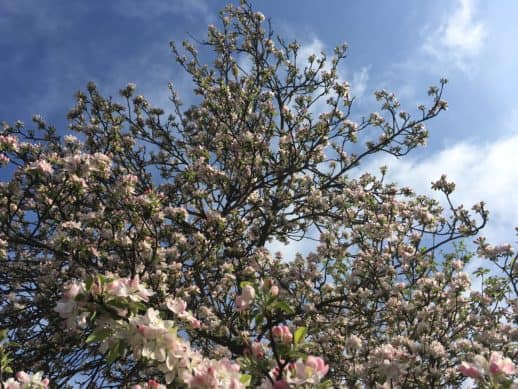
Ten Thousand Apple Blossoms
What happens each spring here on the farm reads like a weather channel melodrama. This year was no different. First it was the 70 degree temperatures in mid March that had us on pins and needles. This abnormal early warming was what caused us to loose 70% of the crop last year. A repeat was not out of the realm of possibility.
Then a cool spell moved in and slowed everything down. Whew. While the rest of the Finger Lakes residents complained bitterly about the return of winter, we marveled at our good luck.
The slow, cold progression of spring continued, and eventually bloom began, by this time nearly on schedule. And what a bloom! The orchard was wall to wall with blossoms. Ten thousand blossoms here, ten thousand there. The sweet, sweet smell lingering in the air.
But it was cold. And wet. And windy. Not the right conditions for good pollination. You would be hard pressed to find a honey bee in the orchard. We rooted for the wild bees. We celebrated the bumbles. We praised the ground bees. Still, pollen tube growth was slowed, the rain washed pollen off the flowers. Could we set fruit? We waited on pins and needles.
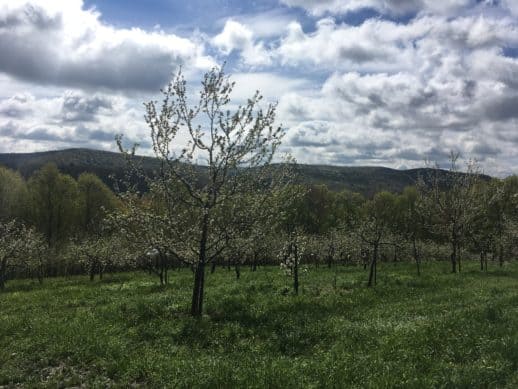
Frequin Rouge Blooming on Albee Hill
Bloom is a time of wonder and a time of fear. How I wish I could send you the smell! If only I could post the scent of apple blossoms on the internet.
This year the hills of Van Etten were cloaked in the soft colors of forest tree flowers and tiny leaves; the palest of greens, cool yellows, even downy whites. Big puffy clouds moved through moody skies. The grass grew fast in the cool, wet weather. Rains washed our world clean but still, the scent of apple blossoms hung in the air.
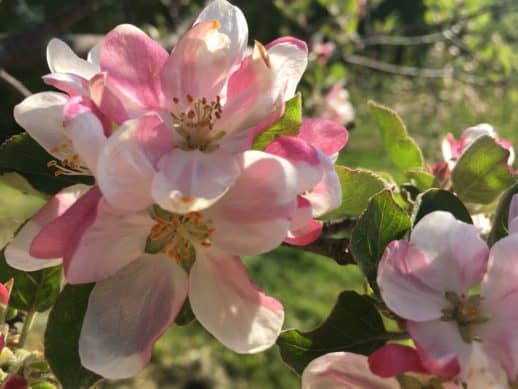
Stoke Red Flowers
And then we just waited. We reveled in the beauty but we didn't sleep at night. The weather warmed a bit, but got cool again. The petals fell. First the Golden Russets. Then the Frequin Rouge. The Ellis Bitter and the Northern Spy fell even as the Stoke Red and Medaille d'Or began blooming. We waited and we watched the petals fall and the fruitlets begin to grow.
Some grew fast. These were good. Some grew slow. Were they behind because they bloomed later? Or were they going to drop?
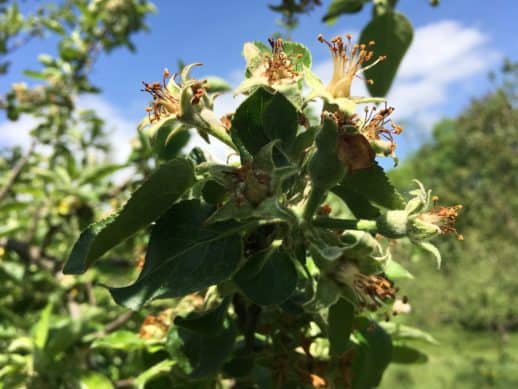
Apple Fruitlets
In a good year, an apple tree makes 90% more flowers than an orchardist wants to set. When the flowers set well, the orchardist panics because the massive crop will break branches and drain the tree of reserves, weakening the tree and insuring a lack of bloom the following year.
In a bad year, cold damages the blossoms before they set, pollination doesn't occur, or the tree experiences stress during the period following bloom. In a bad year the petals fall, and so do the fruitlets.
In a year like this one 80% of the fruitlets turn yellow and fall off. It's totally amazing. What's left is a lot of potential apples, growing like crazy, on a healthy tree.
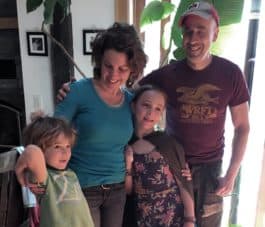
It's too early to make crop predictions. If there's one thing we've learned in 16 years of growing cider fruit, it's that nature is a fickle partner. We knock on wood a lot. Tree trunks. Farming is an exciting profession, if you thrive on uncertainty. Every year is different and singular. If we are lucky, we'll capture that year in a bottle.
That's what we think makes orchard cider so compelling.
Your hopeful orchardists,
Ezra, Autumn, the kids and the dogs.
